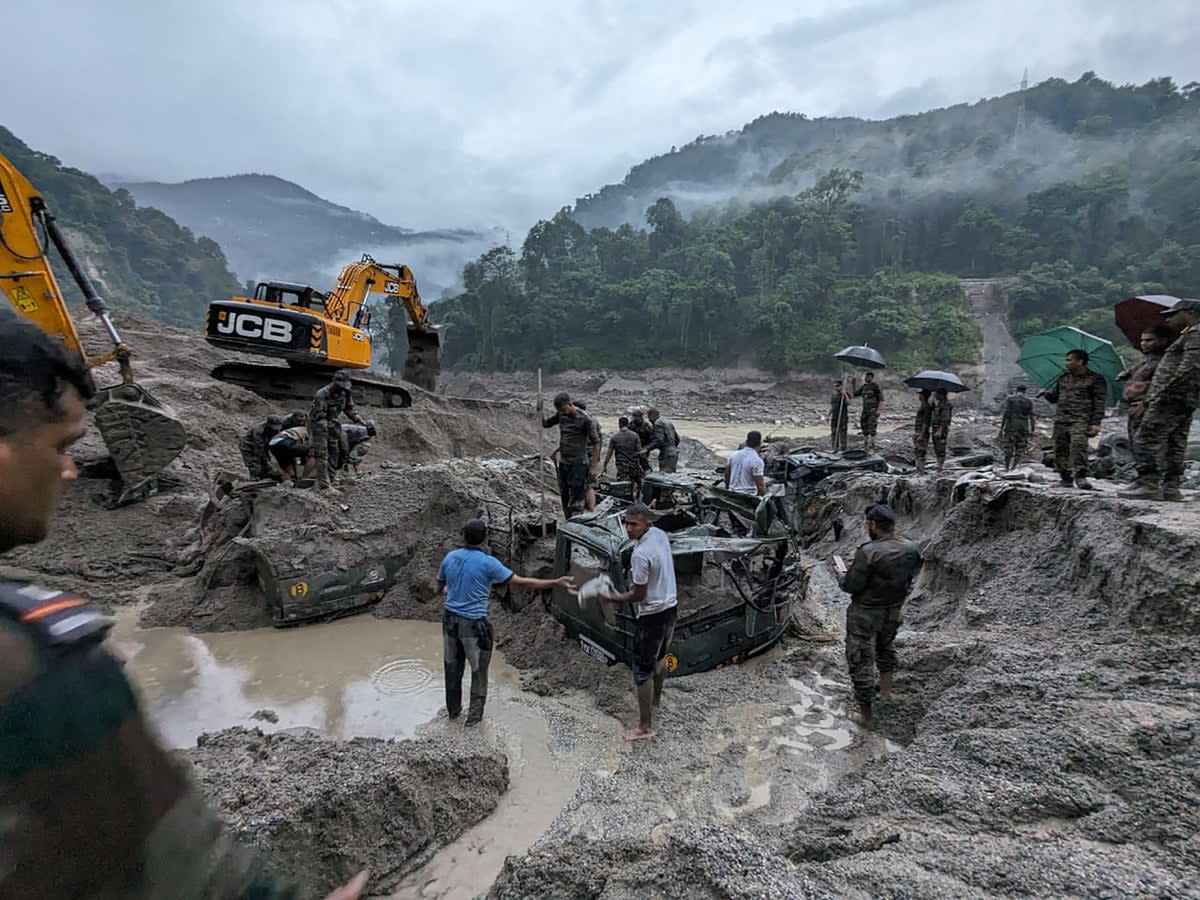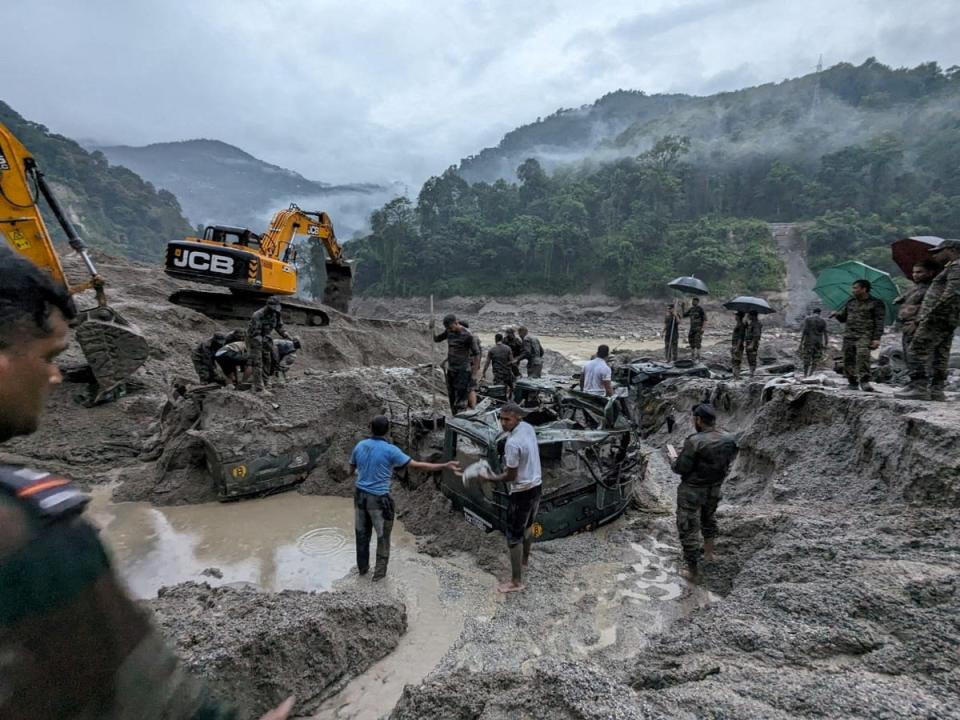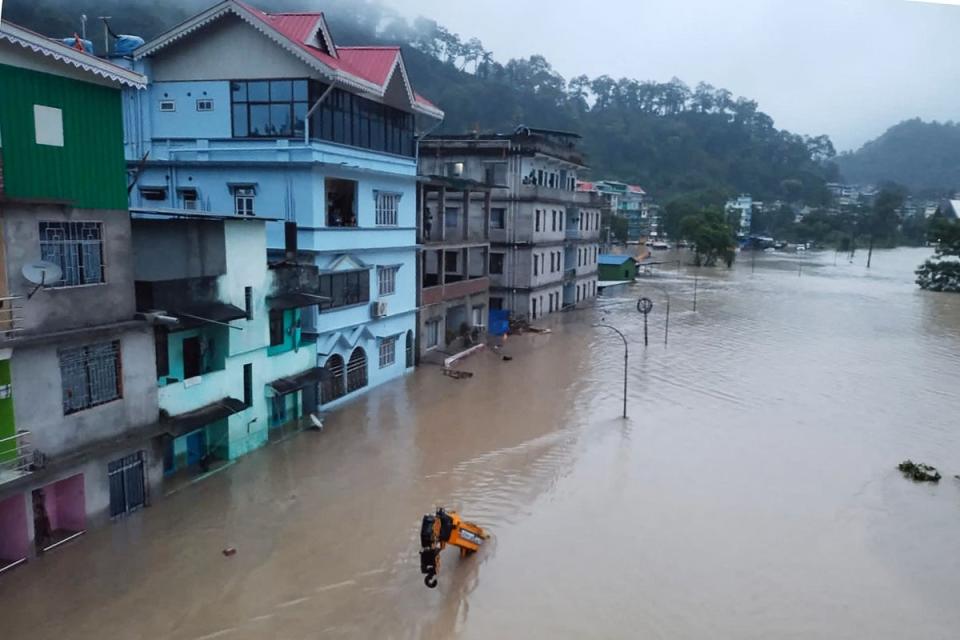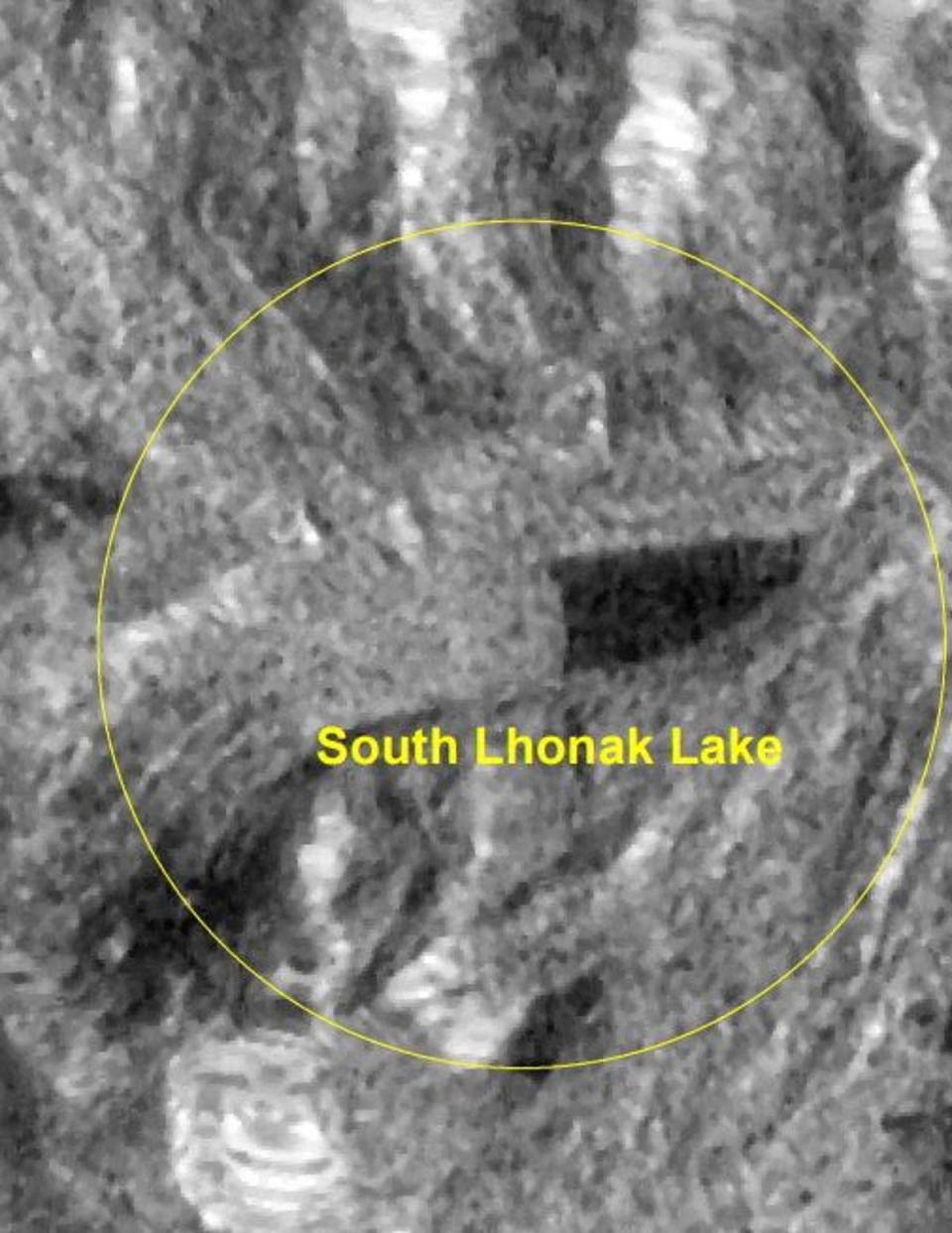Death toll from glacial burst in India’s northeast rises to 40

At least 40 people were found dead in flash floods that inundated India's northeast after a glacial lake burst its banks, prompting army teams to deploy helicopters for rescue operations.
The Lhonak Lake in the mountainous Sikkim state burst its banks on Wednesday after a cloudburst that was apparently triggered by an avalanche. It led to the destruction of the Chungthang Dam – a 1200 MW hydroelectric project – which caused severe flooding in the Teesta river.
Experts say the latest weather event was a “disaster in waiting” as communities in mountainous regions of South Asia continued to face dangerous glacial lake outburst floods.
At least 18 bodies were found in Sikkim, while emergency teams in neighbouring West Bengal recovered another 22 bodies that had been washed away.
Nearly 22,000 people have been affected in the scenic state as the government warned of another potential lake outburst and began evacuating residents from near the Shako Cho Lake.
Fifteen Indian army soldiers were among more than 100 people still missing in the floods, NDTV reported. One soldier who had been reported missing on Wednesday was later rescued.
State chief minister Prem Singh Tamang said the government's first priority was to evacuate 3,000 stranded tourists with the help of helicopters.
"Major damage in areas like the Chunthang Dam but do not know the full extent because areas in Lower Sikkim are still cut-off," the chief minister told the broadcaster. "Roads have been washed out, bridges destroyed. Thirteen bridges over Teesta have been washed away," he added.
About 2,400 people have been evacuated so far and 7,600 people were in relief camps, state official Tseten Bhutia told Reuters. The government has ordered the closure of all private and state-run schools, colleges and offices till 15 October.

The defence ministry said in a statement that military equipment, including firearms and explosives, was washed away in the Teesta river. A child was killed and six people sustained injuries after a washed away mortar shell – picked up by people in West Bengal – exploded.
Sikkim received 101mm of rain in the first five days of October, more than double normal levels, unleashing floods worse than one in October 1968 in which an estimated 1,000 people were killed.
Heavy rain is forecast in parts of the region on Friday but the intensity of showers is likely to ease, the India Meteorological Department said.

A report compiled by the Sikkim State Disaster Management Authority in 2019 had identified Lhonak Lake as "highly vulnerable" to flooding that could cause extensive damage to life and property.
A 2021 study by researchers in India, the US and Switzerland warned that the dam posed a growing risk of catastrophic floods as a warming climate causes the glaciers that feed it to melt faster.
“There has been a substantial increase in the number of glacial lakes as the glaciers are melting due to global warming," said Dr Farooq Azam, Glaciologist, Indian Institute of Technology- Indore.

He explained that when the glaciers advance, they erode the river bed, leading to the deepening of the river.
Dr Azam said: "Climate change has resulted in erratic precipitation, including events like cloudbursts, as we saw in Sikkim, leading to the partial breach of the moraine dam.
"When glaciers are eroding, they put pressure on the bedrock, producing more silt. Whenever there is flash flooding, you would witness more silt and debris flowing downhill, aggravating the destruction caused by floods and landslides."
The army is providing medical aid and phone connectivity to civilians in the areas of Chungthang, Lachung and Lachen in north Sikkim, the army said. Prime minister Narendra Modi’s office said in a statement that the government would support state authorities in the aftermath of the flooding.

